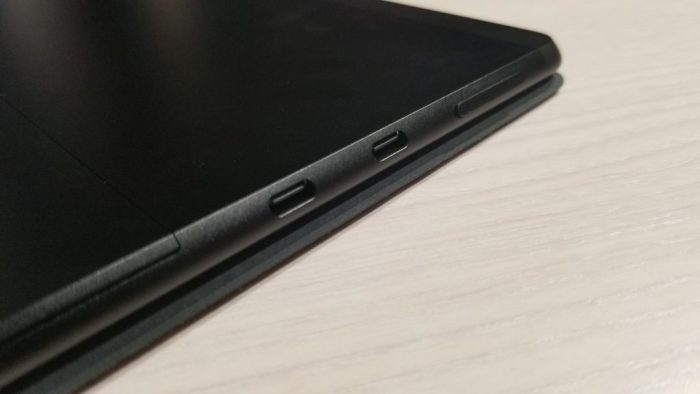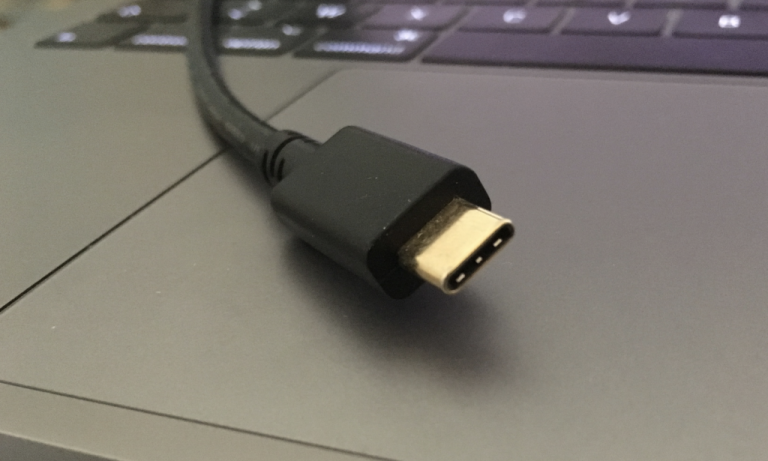Yes, the new Surface devices have USB-C, but here’s why you need to be careful
4 min. read
Published on
Read our disclosure page to find out how can you help Windows Report sustain the editorial team Read more

If you’ve been thinking of buying any of the new Surface devices, you’ve likely heard good things about its support for USB-C. After years of releasing devices sporting older USB-A ports, Microsoft finally is adopting a newer technology on its hardware. However, there are some pitfalls of USB-C that you should be aware of. Here’s why you need to be careful.
All dongles and USB-C hubs are not created equal
First off, there’s the need to address dongles and USB-C Hubs. Since older USB-A accessories obviously can’t fit inside the USB-C port, you’ll need to purchase one of the two to connect things like USB drives, printers, and more.
You can find these dongles for cheap on Amazon. Our quick search for USB-C hubs turned up this third-party option for around $10, as well as an official option from Anker for $40. We also found the Amazon Basics USB-C to USB-A dongle for $8, as well as this third-party option for $9.
However, when buying these dongles, you need to be careful. While you could cheap out and go for something that fits your budget, you could be putting your new Surface device at risk by doing so.
The reason why? Not all USB-C hubs and dongles support the same protocols. Some don’t support power and will need you to plug in an external USB-C connector for pass-through charging to give it juice. This means you could perhaps plug a display into a USB-C hub, only to have it possibly cause damage or to see it not work with your device.
Additionally, some dongles and hubs draw extra power from your device. If they are not properly equipped with the circuity inside to handle it, you could end up damaging your new Surface and causing electrical shortages and other issues.
That’s why we recommend you pay the price and pick an official option from Microsoft, Belkin, Google, etc when shopping around for dongles and USB-C hubs. You’ll know that what you’re buying will work, and won’t damage your new Surface.
The dangers of USB-C charging and cables
Next up there are the dangers of USB-C charging. While USB-C has been billed as a convenient and easy method of charging Surface devices, it also can be a dangerous endeavor.
You see, just like USB-C hubs and dongles, not all USB-C charging cables are created equal. You should always make sure that a USB-C cable is compliant with the USB-C specification before buying it. This is a particular issue with cables that feature USB-A on one end, and USB-C on the other — for connections to your typical power brick.
But why? Most USB-C devices support fast charging, which means that the device will output a lot of power at a fast rate — up to 100W to be exact. Some cables are not properly equipped to handle this. There needs to be circuitry inside the cable to prevent it from drawing too much power. Badly designed and/or cheap cables don’t have this tech inside and can pull too much power and put your device at risk.
Our best advice when looking for charging and USB-C cables with your Surface is to make sure that what you’re buying is clearly labeled. We’d recommend buying Amazon Basics cables, as they list what you’ll be getting. You can clearly see markings and which speeds the cable support, and more. You also won’t have to worry about the cable being easily damaged, or the connectors breaking off and damaging your Surface.
We also recommend you to check out the USB-C compliant website for where you can buy additional cables that fit compliancy standards.
Just stick to Surface Connect
Worst come to worst, if you’re truly afraid, you can use the Surface Connect port for charging instead. That’s part of the reason why we think Microsoft is still keeping the port onboard its devices, and why the company was reluctant to make the move to USB-C. This is a proven foolproof method, as the power brick handles all the electrical conversions, and not the cable itself. Microsoft even sells an adapter, which lets you convert Surface Connect to USB-C if needed.











